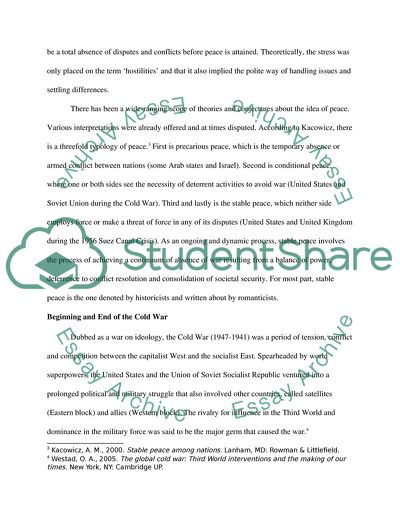Cite this document
(Post-Cold War Diplomacy and Peace Processes Essay Example | Topics and Well Written Essays - 1500 words - 2, n.d.)
Post-Cold War Diplomacy and Peace Processes Essay Example | Topics and Well Written Essays - 1500 words - 2. https://studentshare.org/military/1750401-what-explains-the-widening-and-deepening-of-international-peace-operations-after-the-cold-war
Post-Cold War Diplomacy and Peace Processes Essay Example | Topics and Well Written Essays - 1500 words - 2. https://studentshare.org/military/1750401-what-explains-the-widening-and-deepening-of-international-peace-operations-after-the-cold-war
(Post-Cold War Diplomacy and Peace Processes Essay Example | Topics and Well Written Essays - 1500 Words - 2)
Post-Cold War Diplomacy and Peace Processes Essay Example | Topics and Well Written Essays - 1500 Words - 2. https://studentshare.org/military/1750401-what-explains-the-widening-and-deepening-of-international-peace-operations-after-the-cold-war.
Post-Cold War Diplomacy and Peace Processes Essay Example | Topics and Well Written Essays - 1500 Words - 2. https://studentshare.org/military/1750401-what-explains-the-widening-and-deepening-of-international-peace-operations-after-the-cold-war.
“Post-Cold War Diplomacy and Peace Processes Essay Example | Topics and Well Written Essays - 1500 Words - 2”. https://studentshare.org/military/1750401-what-explains-the-widening-and-deepening-of-international-peace-operations-after-the-cold-war.


